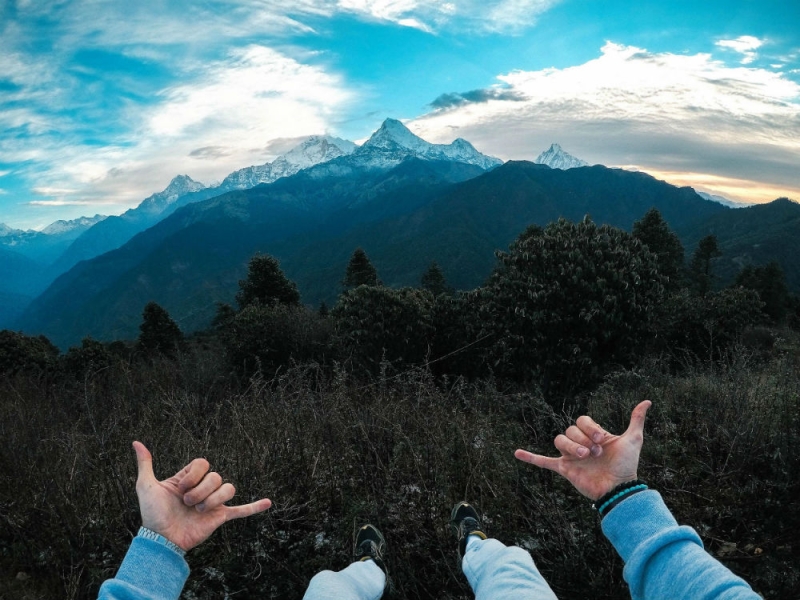
Nepal is a country of monasteries and Buddhist temples, lost among the eight highest mountain peaks in the world. The mountains of Nepal attract climbers and hikers like a magnet, and it’s clear why – 85 percent of the country’s territory is covered by the majestic Himalayas.
In this article, OneTwoTrip recreation director Evgeniy Trofimchuk will reveal the secrets of what people should be prepared for when going trekking for the first time along one of the many hiking routes in Nepal, the duration of which can vary from one day to a month.
What tracks are there
The routes are designed for both complete beginners and experienced travelers. If the route lasts more than a day, the tour is designed so that every night tourists will spend the night in comfortable cottages or guesthouses with showers and Wi-Fi.
Some companies recruit organized groups and set out with tents. To make the trek as comfortable as possible, the team includes guides, cooks and porters. This type of trekking is popular on new or “wild” trails.
Popular tracks with guesthouses along the way
- Trek to Everest Base Camp: 14 days
- Three Passes Trek and Everest Base Camp: 2 — 4 weeks
- Poon Hill: 9 days
- Annapurna Base Camp: 14 days
- Annapurna Circuit Trek: 18 days
- Manaslu circuit track: 2 — 4 weeks
- Trek to Langtang: 10 days
- Trek to Kanchenjunga Base Camp: 28 days
- Trek to Lake Phokumdo: 2 — 4 weeks
- Trek to Makalu Base Camp: 2 — 4 weeks
Popular tracks with tents
- Trek to Upper Dolpo: 28 days
- Upper Mustang (“the lost kingdom of Tibet”): 20 days
- Trek around Mount Manaslu: 21 days
- Trekking to Makalu base camp: 21 days
- Trip to Lake Rara: 15 days
- Dhaulagiri Circuit Trek: 20 days
- Trekking to Kanchangunga Base Camp: 27 days
- Ganesh-Himal trek: 19 days
- Bhairav Kund Trek: 14 days
- Trek to Lake Tilicho: 17 days
- Trek to Amphu Lapcha Pass: 21 days
- Hike to the Arun Valley and Salpa Pass: 20 days
- Hike to the shaman lake Salpa: 12 days
For the first time, select tracks no longer than 5 days. Hiking in the mountains does not require you to have the physical training of a professional athlete. You can always stop to rest, the guide will not rush you.
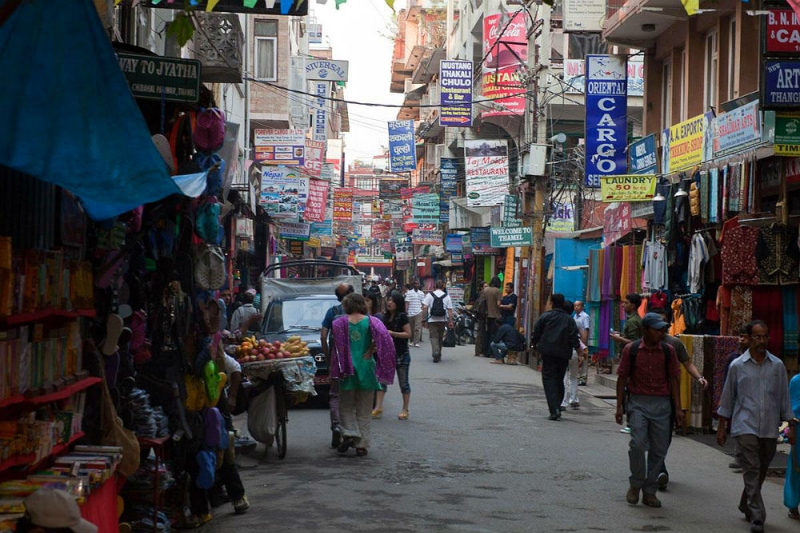
Numerous travel agencies and shops in Kathmandu
It’s not difficult to find a guide and an option for the trek in Kathmandu. In the city, at every step there are travel agencies and private offices that offer a variety of hiking options.
When to go
It all depends on the specific track; if the altitude does not exceed 3000 meters, then it is better to go through them from April to October. More serious heights are best conquered from May to July. For each specific region, before your trip, we advise you to check the weather forecast and seasonality of hikes.
Track. Finding the track is not difficult. For example, I agreed right at the hotel reception for a personal guide and the Poon Hill Ghorepani trek, which lasts 5 days. Tourist services directly at the hotel — common in Nepal. For the Nepalese “all inclusive” plus the road from Kathmandu to the start of the trek (133 kilometers) and back, I paid about 27,000 rubles, and this is negotiable.
Before paying for the trip, I decided to find out prices from travel agencies on the street to check whether the price was adequate, but no one agreed to make the price lower for a similar trek. The price, apparently, was really good.
This all-inclusive package included all overnight stays, travel expenses, three meals a day and a personal guide for 6 days. (5 days of trekking + a day on the road to the start and back).
The price also included a permit to visit the Annapurna National Park, in the territories of which the trek ran, as well as a tracker registration card (for registration and safety).
Life hack. If you didn’t bring your own equipment, you can buy everything you need in major cities in Nepal. Although the prices are not very high, do not forget to bargain. There are a lot of shops in the cities.
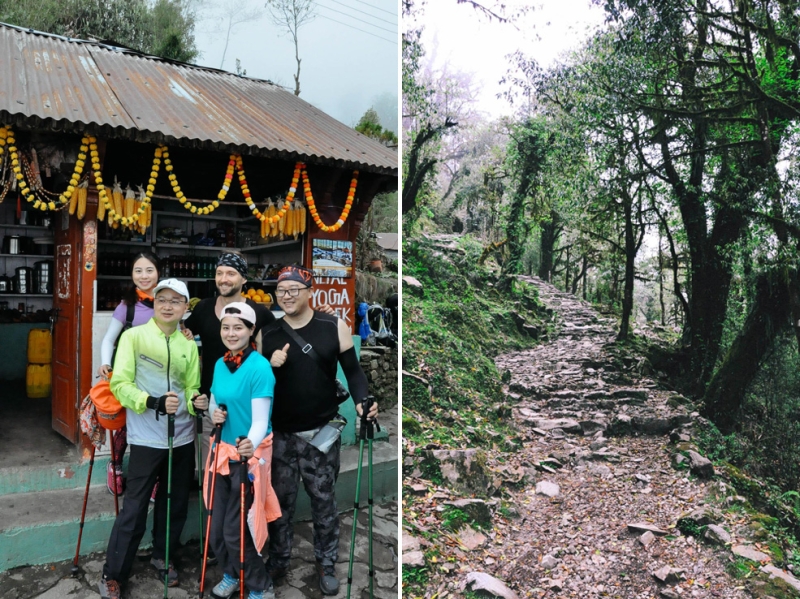
With a friendly company of Chinese trekkers/Very often the trail looks like this
Altitude sickness
Please note that mountain sickness usually begins at altitudes above 3500 meters. So if you do not have special training, then choose your track so that it does not exceed this height.
I also do not recommend going on jeeps on “high excursions”. Since the body must get used to the height gradually.
What to take with you
If you are not planning to conquer Everest the first time, then you won’t need a lot of equipment. The main thing is not to forget that you will have to bear everything yourself. You can hire a porter, if your finances allow you, in which case you can pack more things.
Backpack. Definitely a hiking one. The number of liters (capacity) depends on the number of things you carry with you. According to experienced trekkers, 40-50 liters is the optimal volume.
Shoes. Buy good trekking boots in advance and wear them out so that they don’t start to chafe and cause discomfort during the hike.
If the track is not very difficult, then you can get by with good sneakers – my option.
Warm clothes.The heat and sun during the day can be misleading, but warm clothes are needed. As you climb higher, the temperature at night will drop lower and lower. I spent a couple of nights under two blankets and in a tracksuit. Although during the day it was + 25 C.
Chargers and electricity. There is a problem with electricity in the mountains. Regular rain or strong wind is enough to cut off the power supply. So take with you the required number of batteries for your equipment and don’t forget about power banks.
Life hack. Also bring a tee, as there are limited outlets in parking lots. With a tee, you are guaranteed the sympathy of others in guesthouses.
Food/water.Water, as a rule, is not included in the price of the trek. You can buy it at the parking lots or replenish supplies at the pumps along the trail. You can drink this water without fear. You can eat at different guesthouses along the way. It is better not to try exotic food, since the nearest good hospital is not in Nepal =) Please note that Nepalese hardly eat bread and do not know what “peace of bread, please!” is. The local flatbread is called chapati.
Life hack. The best dish to order is Dal Bat – rice with various additives. It is served either with vegetables or chicken. You can ask for a refill for free until you’re full! The rule applies throughout Nepal. They will complement everything except a portion of meat. The dish is quite tasty and filling! As the locals say, Dal Bhat power 24 hour!
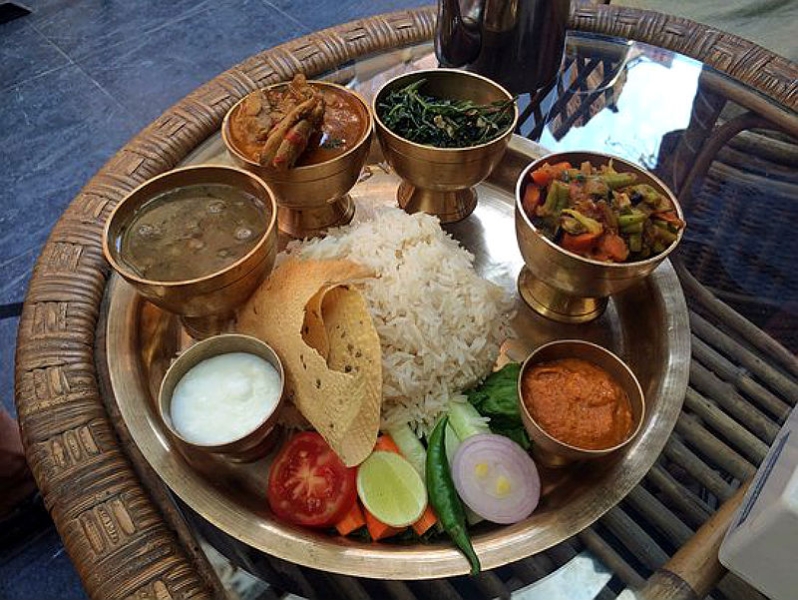
Traditional dish Dal Bal: rice with various fillings
Maps/GPS. Worth taking if you are going on the trek alone, if with a guide, there is no point in it.
Other:
1. Travel first aid kit.
2. Trekking poles (at your discretion). They are not needed on simple tracks.
3. If your backpack allows, take a second pair of shoes.
5. Sunscreen. You can get sunburned quickly in the sun during the day.
6. Insurance, which also covers trekking. Check carefully.
7. Thermos and tea bags. At any parking lot you can pour boiling water for free.
8. Shoe dryers and a small hairdryer. You can dry things with a hairdryer)
Overnight stays. You will spend the night in guesthouses (guest houses). In Nepal, guesthouses have their own characteristics, in particular, the owners of the house live there at the same time. The rooms are very simple, the conditions are spartan. The walls are made of chipboard, there is almost no sound insulation. But there is a comfortable bed with a very warm blanket, a socket, a hanger and gorgeous views: almost all the windows overlook the mountains.
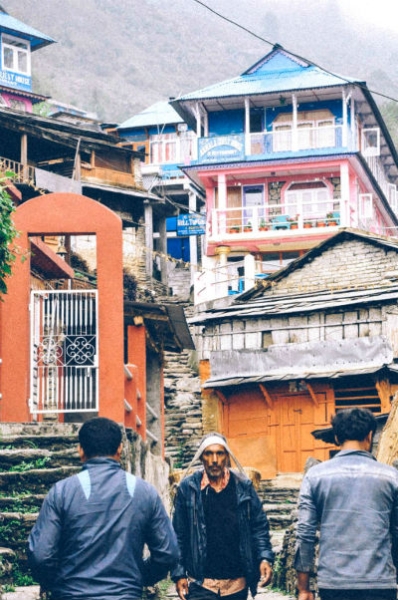
This is what they look like typical guest houses
As a rule, guesthouses have hot water and a shower where you can wash (free of charge). Water may be in limited quantities, so be mindful of other guests. You will have to wash things by hand; there are no washing machines there. But you can dry wet things by the stove. Each guesthouse has a large stove-stove in the common room. In the evening, large groups of travelers from different parts of the world gather around it. People warm up, communicate, share their emotions from the hike.
Lifehack. You can ask the guesthouse owners to give you the Internet so that you can upload your photos from the track to the social network.
In the guesthouse, you can ask them to prepare breakfast/lunch/dinner for you. Everything is delicious and inexpensive.
Life hack. If you are going on the trek alone, without a guide and pre-booking a guesthouse, then you can try to agree to spend the night for free, but on the condition that you order dinner or breakfast. This is a common practice among trackers.
Insects and vaccinations. At your discretion. There are no strict requirements before the track.
Life hack. I advise you to buy a good raincoat at home, because in Nepal they are of very poor quality.
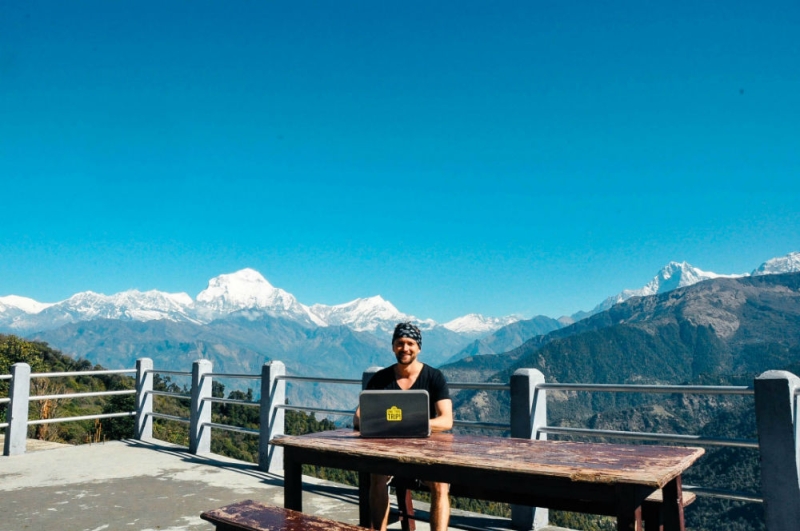
In conclusion
The impressions from the track are incredible. Photos and videos cannot convey the feeling of being there, at the foot of mountains 8,000 meters high. So, once you are in Nepal, spare no time and money and be sure to go hiking!
To make a hotel reservation online, use the OneTwoTrip service.

